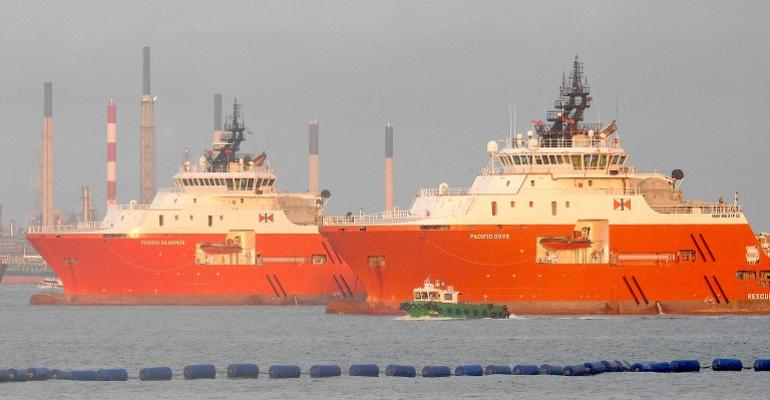By Wasana Nadeeshani Sellahewa
(Commonwealth) _ The market’s improvement was brought about by a protracted period of consolidation, a return to normalcy in activity following the pandemic, quicker financial investment choices by national oil corporations, and record investment in mobile offshore production units.
The beneficial effects of fleet shrinkage and multi-year fleet consolidation, both 2014–19 and immediate Covid–19 consequences, remained. However, when markets improved, there was a decrease in demolition and an increase in S&P activity (with rising asset values) in 2022. There was also reactivation from lay-up and delivery of historical resales. There is increasing “discussion” about newbuild projects for rigs and OSVs (charterer projects / low emissions), but given the existing cashflow, newbuild pricing, attitude of lenders, residual value worries, and yard availability, this may happen gradually, said Gordon.
Looking back on the previous five years, there have been distinct eras that have led to significant transformations in the offshore supply vessel (OSV) sector and the oil and gas business. The sector recovered from the 2014 oil price crisis between 2017 and 2019. The coronavirus illness 2019 (COVID-19), which spread over the world from late 2019 to 2021 and brought with it a multitude of varieties and waves, has left the OSV market unsure of when or even if it would see a recovery. The global rollout of vaccination programs and other mitigating strategies have made it possible to restart economic activities. Prices for oil and gas rose as oil and gas production improved.
After experiencing slipping demand and declining utilisation for 10 quarters, the market started to show signs of recovery in early 2017. Before the price collapse of 2014, the OSV market had been dealing with a number of long-standing issues, such as huge fleet sizes and an excess of ordered and built boats compared to anticipated demand. Slower newbuild entry into the market just postponed the unavoidable continuing fleet increase. Low levels of scrapping continued, with stacking the boats being the favoured solution. Contract durations decreased significantly as the spot market gained popularity. Even as the sector started to grow, drilling campaigns, building projects, and longer-term chartering needs were tightly and cautiously monitored.
The COVID-19 outbreak presented another another disaster to the market. Lockdowns and limitations were imposed as the entire world fought to deal with the pandemic’s consequences, with significant negative economic implications. Projects were put on hold, postponed, or even canceled as a result of the decline in oil demand. The recovery from the prior recession was completely lost. With other locations not being spared from dramatic demand declines, West Africa and the US Gulf of Mexico saw the largest drop in term activity of about 40% year over year. Demand increased with the cautious anticipation of a rebound in late 2020 and early 2021. OSV demand increased in 2021 as drilling operations and field developments resumed.
By the end of this decade, the sector is projected to produce 8% of the world’s upstream oil and gas, up from the current 6%, according to the consultant’s “Global deepwater 2022 status of the industry” study. Brazil, Guyana, and Mozambique were mentioned as the primary drivers of the rise by Marcelo de Assis, head of upstream research, who also noted that “developments are also increasing deeper; output from water depths of above 1,500 m will overtake that from 400 to 1,500 m by 2024.” At the same time, typical development areas like Angola and the US Gulf of Mexico have not been producing significant new commercial discoveries.
Cost inflation is one of the industry’s biggest problems. He cautioned that because to constraints in the worldwide deepwater supply chain, efficiency improvements obtained during prior downturns are starting to reverse. At the same time, typical development areas like Angola and the US Gulf of Mexico have not been producing significant new commercial discoveries.








